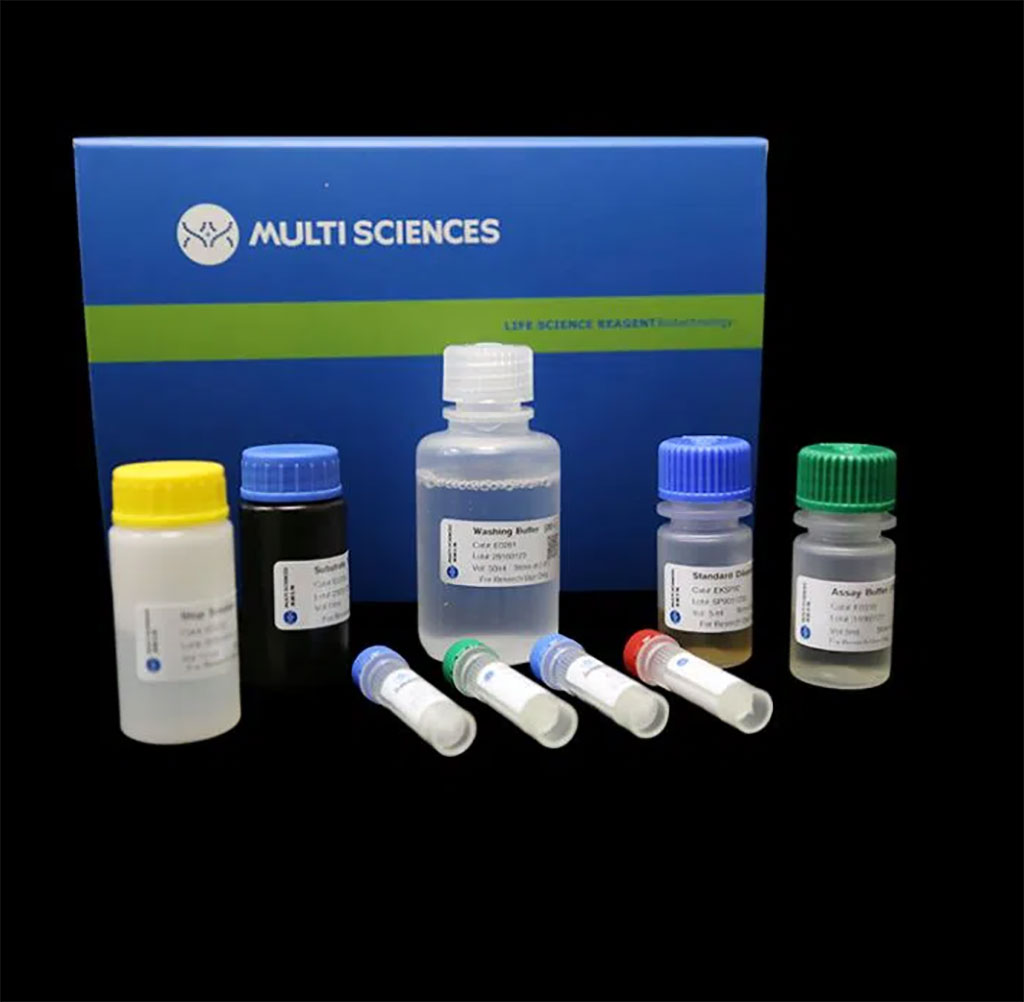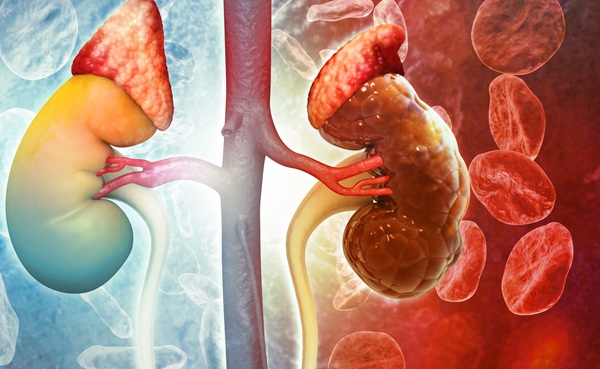Serum Vimentin Predicts Mortality in Pediatric Severe Sepsis
|
By LabMedica International staff writers Posted on 14 Jun 2022 |

Sepsis is defined as a life-threatening organ dysfunction caused by a dysregulated host response to infection. It is a leading cause of death worldwide in the pediatric population. Vascular hyperpermeability by loss of endothelial barrier integrity is a hallmark of sepsis.
Inflammatory response during sepsis triggers endothelial barrier dysfunction, consequently resulting in not just vascular leak and edema, but even shock and organ failure. The cytoskeletal filament vimentin is inherent to the endothelial phenotype and is critical for the proper function of endothelial cells. The association between serum vimentin and the prognosis of sepsis in children remains indeterminate.
Critical Care doctors at the Shanghai Children's Hospital (Shanghai, China) conducted a prospective study of pediatric severe sepsis (PSS) cases who were admitted to the pediatric intensive care unit (PICU) from January 2018 to December 2020. A total of 108 patients with PSS with a median age of 19.5 month were enrolled.
The laboratory indexes included routine blood indexes (white blood cell, platelet, C-reactive protein, lactate dehydrogenase, lactic acid [Lac]), cytokines (interleukin [IL]-6, IL-10, tumor necrosis factor-α), immune indexes (NK%, CD4+ CD8+, CD19), biomarkers of endothelial cell injury (serum intercellular adhesion molecule, serum vascular cell adhesion molecule, P-selectin).
For the serum vimentin assay, serum was collected within six hours of PICU admission and stored at –80 °C. Serum vimentin levels were determined using enzyme-linked immunosorbent assays: Human Vimentin ELISA Kit (MultiScience, LIANKE Biotech, CO., LTD, Hangzhou, China) with the range of 0.2–60 ng/mL. ELISA was performed in duplicate, and other assays were performed in strict accordance with the manufacturers’ instructions.
The scientists reported that the hospital mortality rate was 19.44% (21/108). Comparing with healthy controls, serum vimentin levels on PICU admission were significantly higher in patients with PSS. The area under the ROC curve for vimentin to predict the hospital mortality was 0.712 (95% CI: 0.578–846) with a sensitivity of 71.4% and a specificity of 70.1%. Moreover, hospital mortality was significantly higher in patients with vimentin level over the cutoff value of 24.53 ng/mL than in patients with vimentin level below 24.53 ng/L.
Serum levels of sICAM-1, sVCAM-1 and P-selectin displayed an increased tendency in non-survivors compared with survivors. NK (%) was significantly lower in non-survivors than in survivors (2.94 versus 4.34), whereas serum Lac levels at PICU admission displayed higher tendency in non-survivors (2.6 mmol/L versus 2.1 mmol/L). According to the results of correlation analysis, serum vimentin levels were positively correlated with P-selectin and NK (%).
The authors concluded that serum vimentin level as an indicator of endothelial injury is associated with the prognosis of PSS, and serum vimentin level ≥24.53 ng/mL on PICU admission predicts high risk for hospital mortality in PSS. The study was published in the August 1 2022 issue of the International Journal of Infectious Diseases.
Related Links:
Shanghai Children's Hospital
LIANKE Biotech
Latest Immunology News
- Blood Test Could Detect Adverse Immunotherapy Effects
- Routine Blood Test Can Predict Who Benefits Most from CAR T-Cell Therapy
- New Test Distinguishes Vaccine-Induced False Positives from Active HIV Infection
- Gene Signature Test Predicts Response to Key Breast Cancer Treatment
- Chip Captures Cancer Cells from Blood to Help Select Right Breast Cancer Treatment
- Blood-Based Liquid Biopsy Model Analyzes Immunotherapy Effectiveness
- Signature Genes Predict T-Cell Expansion in Cancer Immunotherapy
- Molecular Microscope Diagnostic System Assesses Lung Transplant Rejection
- Blood Test Tracks Treatment Resistance in High-Grade Serous Ovarian Cancer
- Luminescent Probe Measures Immune Cell Activity in Real Time
- Blood-Based Immune Cell Signatures Could Guide Treatment Decisions for Critically Ill Patients
- Novel Tool Predicts Most Effective Multiple Sclerosis Medication for Patients
- Companion Diagnostic Test for CRC Patients Identifies Eligible Treatment Population
- Novel Tool Uses Deep Learning for Precision Cancer Therapy
- Companion Diagnostic Test Identifies HER2-Ultralow Breast Cancer and Biliary Tract Cancer Patients
- Novel Multiplex Assay Supports Diagnosis of Autoimmune Vasculitis
Channels
Molecular Diagnostics
view channel
Blood Biomarker Improves Early Brain Injury Prognosis After Cardiac Arrest
After a cardiac arrest, many patients remain unconscious for days, leaving doctors and families facing uncertainty about whether meaningful recovery is possible. Current tools to assess brain damage, including... Read more
Biomarkers Could Identify Patients at High Risk of Severe AKI After Major Surgery
Acute kidney injury is one of the most common and dangerous complications after major surgery, particularly among patients in intensive care. Even mild impairment of kidney function can lead to long-term... Read more
CLIA Test Identifies Head and Neck Cancer Recurrence from Post-Surgical Lymphatic Fluid
While the lymphatic system’s critical role in metastasis has long been recognized, routine access to patient lymph has been elusive. Now, a non-invasive process can access lymph through the collection... Read moreHematology
view channel
MRD Tests Could Predict Survival in Leukemia Patients
Acute myeloid leukemia is an aggressive blood cancer that disrupts normal blood cell production and often relapses even after intensive treatment. Clinicians currently lack early, reliable markers to predict... Read more
Platelet Activity Blood Test in Middle Age Could Identify Early Alzheimer’s Risk
Early detection of Alzheimer’s disease remains one of the biggest unmet needs in neurology, particularly because the biological changes underlying the disorder begin decades before memory symptoms appear.... Read more
Microvesicles Measurement Could Detect Vascular Injury in Sickle Cell Disease Patients
Assessing disease severity in sickle cell disease (SCD) remains challenging, especially when trying to predict hemolysis, vascular injury, and risk of complications such as vaso-occlusive crises.... Read more
ADLM’s New Coagulation Testing Guidance to Improve Care for Patients on Blood Thinners
Direct oral anticoagulants (DOACs) are one of the most common types of blood thinners. Patients take them to prevent a host of complications that could arise from blood clotting, including stroke, deep... Read moreImmunology
view channelBlood Test Could Detect Adverse Immunotherapy Effects
Immune checkpoint inhibitors have transformed cancer treatment, but they can also trigger serious immune-related adverse events that damage healthy organs and may become life-threatening if not detected early.... Read more
Routine Blood Test Can Predict Who Benefits Most from CAR T-Cell Therapy
CAR T-cell therapy has transformed treatment for patients with relapsed or treatment-resistant non-Hodgkin lymphoma, but many patients eventually relapse despite an initial response. Clinicians currently... Read moreMicrobiology
view channel
Blood-Based Diagnostic Method Could Identify Pediatric LRTIs
Lower-respiratory tract infections (LRTIs) are a leading cause of illness and death worldwide, and pneumonia is the leading infectious cause of death in children under five, claiming the lives of over... Read more
Rapid Diagnostic Test Matches Gold Standard for Sepsis Detection
Sepsis kills 11 million people worldwide every year and generates massive healthcare costs. In the USA and Europe alone, sepsis accounts for USD 100 billion in annual hospitalization expenses.... Read moreRapid POC Tuberculosis Test Provides Results Within 15 Minutes
Tuberculosis remains one of the world’s deadliest infectious diseases, and reducing new cases depends on identifying individuals with latent infection before it progresses. Current diagnostic tools often... Read more
Rapid Assay Identifies Bloodstream Infection Pathogens Directly from Patient Samples
Bloodstream infections in sepsis progress quickly and demand rapid, precise diagnosis. Current blood-culture methods often take one to five days to identify the pathogen, leaving clinicians to treat blindly... Read morePathology
view channel
Rapid Low-Cost Tests Can Prevent Child Deaths from Contaminated Medicinal Syrups
Medicinal syrups contaminated with toxic chemicals have caused the deaths of hundreds of children worldwide, exposing a critical gap in how these products are tested before reaching patients.... Read more
Tumor Signals in Saliva and Blood Enable Non-Invasive Monitoring of Head and Neck Cancer
Head and neck cancers are among the most aggressive malignancies worldwide, with nearly 900,000 new cases diagnosed each year. Monitoring these cancers for recurrence or relapse typically relies on tissue... Read more
Common Health Issues Can Influence New Blood Tests for Alzheimer’s Disease
Blood-based tests for Alzheimer’s disease are transforming diagnosis by offering a simpler alternative to spinal taps and brain imaging. However, many people evaluated at memory clinics also live with... Read more
Blood Test Formula Identifies Chronic Liver Disease Patients with Higher Cancer Risk
Chronic liver disease affects millions worldwide and can progress silently to hepatocellular carcinoma (HCC), one of the deadliest cancers globally. While surveillance guidelines exist for patients with... Read moreTechnology
view channel
Machine Learning Models Diagnose ALS Earlier Through Blood Biomarkers
Amyotrophic lateral sclerosis (ALS) is a rapidly progressive neurodegenerative disease that is notoriously difficult to diagnose in its early stages. Early symptoms often overlap with other neurological... Read more
Artificial Intelligence Model Could Accelerate Rare Disease Diagnosis
Identifying which genetic variants actually cause disease remains one of the biggest challenges in genomic medicine. Each person carries tens of thousands of DNA changes, yet only a few meaningfully alter... Read moreIndustry
view channel
BD and Penn Institute Collaborate to Advance Immunotherapy through Flow Cytometry
BD (Becton, Dickinson and Company, Franklin Lakes, NJ, USA) has entered into a strategic collaboration with the Institute for Immunology and Immune Health (I3H, Philadelphia, PA, USA) at the University... Read more


















